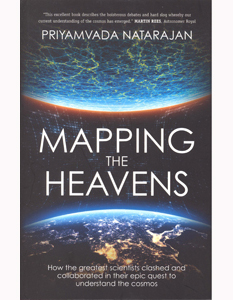Our view and understanding of the universe has changed to an almost incredible extent since the beginning of the Space Age, not least thanks to products of that Space Age. A child growing up half a century ago could read a few classic astronomy texts featuring black-and-white plates from the likes of the Palomar Telescope and, in the UK at least, marvel at the latest developments thanks to Patrick Moore’s ‘Sky At Night’ TV series. The best images of Mars and Jupiter were fuzzy blobs, there was no proof of exoplanets and the idea of landing a spacecraft on an asteroid was pure science fiction!
According to its publicity, this book provides “a tour of the ‘greatest hits’ of cosmological discoveries - the ideas that reshaped our universe over the past century”. “The cosmos”, it continues, “is now a universe that is expanding at an accelerating pace, propelled by dark energy and structured by dark matter”. The ‘tour’ comprises seven chapters covering astronomy and astrophysics from the “early cosmic maps”, via black holes and the cosmic background radiation to what the author calls “the new reality and the quest for other worlds”. Its final 30-odd pages provide chapter notes, further reading and a decent index, all of which encourage further research and engagement in the topic. However, the volume is only sparsely illustrated and, despite a small colour insert, comes across as an old-style text.
That said, the author’s passion for the subject is also evident as we read of her early experiences with Encyclopaedia Britannica and, later, “programming a Commodore 64…to generate the monthly sky map over Delhi for a national newspaper”. Her curiosity and talent led eventually to MIT, Cambridge (UK) and a PhD in astrophysics. Recognising that there are many books that tell the history of cosmological discoveries, her goal here is to “recount how scientific ideas have been developed, tested, debated and eventually accepted”.
What you get is an intelligent analysis of astronomical discovery, why laymen don’t understand science or trust so-called experts and what it all means for society. Modern-day science spans both the largest scales and the smallest, the author concludes, looking beyond our universe at one extreme and within our galaxy to “reflect on ourselves” at the other. In both pursuits, she says philosophically, “we seek companions…a community of intelligent beings, which force us to question what it means to be alive”.
Mark Williamson, Space Technology Consultant











